Introduction
The statistics of the Food and Agriculture Organization of the United Nations (FAO) indicate that world production of strawberries has exceeded 4 million metric tons since 2007 (FAO 2014). With a total production of 1.4 million tons (3 billion pounds) in 2012, the United States is the largest producer among countries where statistical data are available, accounting for about 30% of the world supply. Other major strawberry producers include Mexico, Turkey, Spain, Egypt, Korea, and Poland (Figure 1). Production in Egypt increased from 70 thousand tons in 2000 to 240 thousand tons in 2012. Production in Mexico increased from 140 thousand tons to 360 thousand tons, making Mexico the second-largest strawberry producer in the world. Turkey, too, has seen rapid growth in its strawberry industry. This study provides an overview of the US and Mexican strawberry industries, paying special attention to the trade relations between the two countries.

Credit: Adobe Stock Image
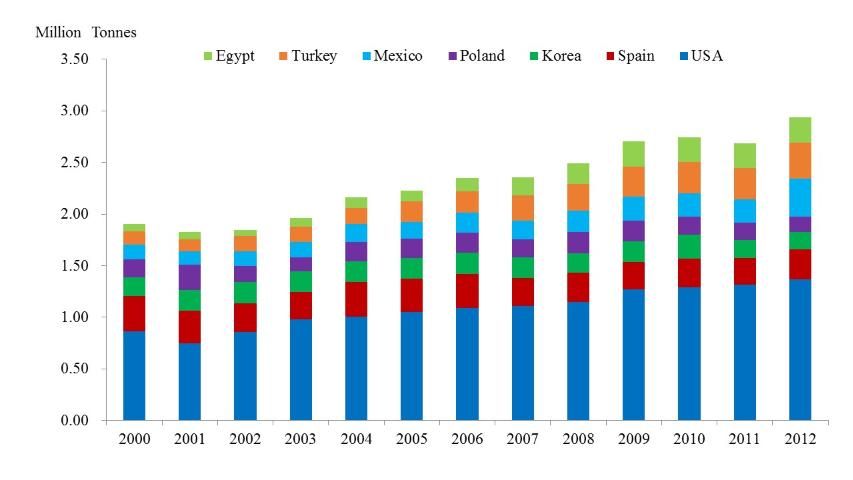
Mexican Strawberry Industry
Production
Currently, Mexico is the largest strawberry exporter to the US market. Its production and exports increased dramatically in 2012 and 2013. In 2012, Mexico's strawberry production (including both fresh and frozen) was 795 million pounds, up 57.5% from the previous year (Figure 2), and in 2013, it exceeded 800 million pounds. This increase in production is the result of rapid growth in acreage (Figure 3).
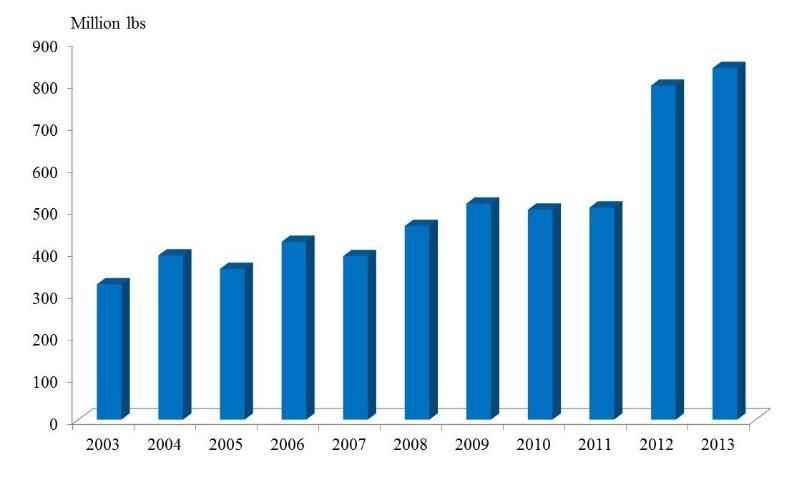
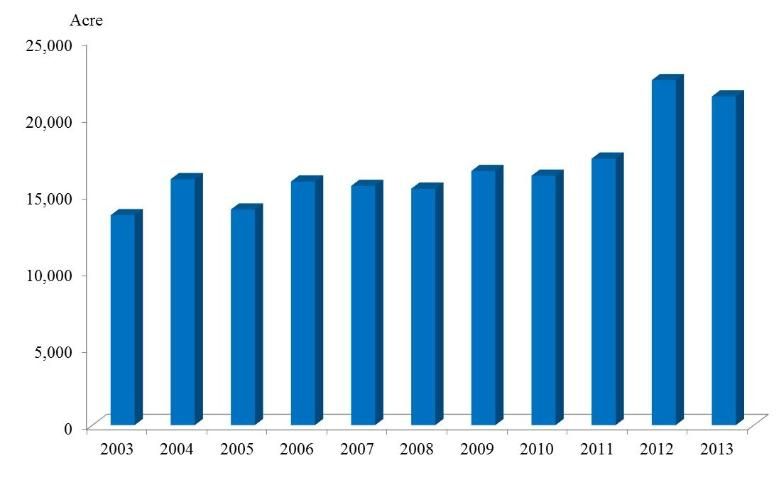
Mexican strawberries are mainly produced in three states: Michoacan, Guanajuato, and Baja California (highlighted in yellow in Figure 4). Michoacan is the most important growing area for winter production. Note that growers receive higher prices in wintertime. The Mexican government has proposed doubling its strawberry production capacity by 2020 (Fresh Fruit Portal 2013). In comparing strawberry production between Mexico and Florida in 2014, it is estimated that at 26,556 acres, Mexico's production area is twice Florida's production area.
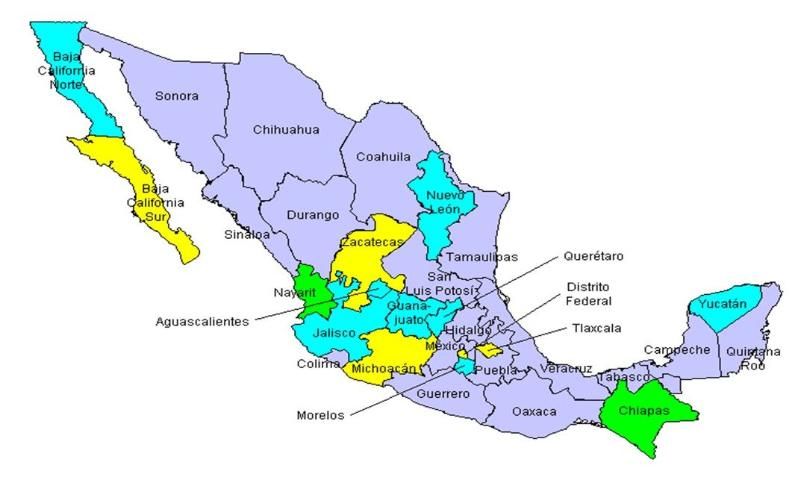
Trade
Mexico is the fourth largest fresh strawberry exporter in the world in terms of volume. The majority of Mexico's exports of fresh strawberries go to the United States. Between 2011 and 2012, Mexico's exports increased 48% (Figure 5). This caused an oversupply in the US market, leading to a market crash. As a result, Mexico's strawberry exports to the United States declined in 2013.

Mexico also imports strawberries from the United States, but the amount is insignificant. Imports have been decreasing since 2008 (Figure 5). Mexico imported 27 million pounds in 2012, only half the amount in 2008. With its domestic production increasing, strawberry imports to Mexico from the United States are expected to decrease even further in the future.
US Strawberry Industry
Production
According to the National Agricultural Statistics Service of the United States Department of Agriculture (USDA/NASS 2014), US fresh strawberry production in 2013 was approximately 2,509 million pounds (Figure 6), and harvested acreage was 60,410 acres. The average fresh strawberry yield was 41,533 pounds per acre. California, Florida, and Oregon are the top three US strawberry-producing states, with California accounting for 89% of the total fresh production in 2013. With its long harvesting season, California's per-acre strawberry yield is generally about two times higher than Florida's yield and about five times higher than Oregon's yield.
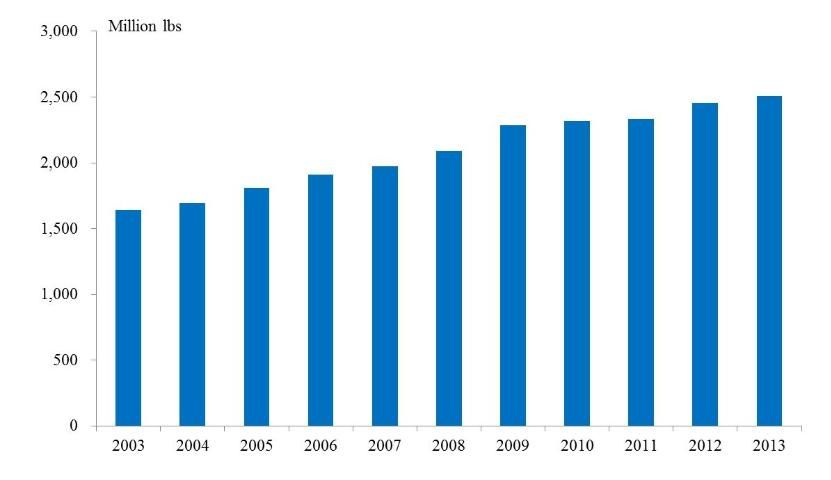
Production value was at an all-time high in 2013, reaching US$2.4 billion (Figure 7). California fresh strawberry production value was US$2 billion, accounting for 84% of total production value. In contrast, Florida's production value was US$0.3 billion (USDA/NASS 2014).
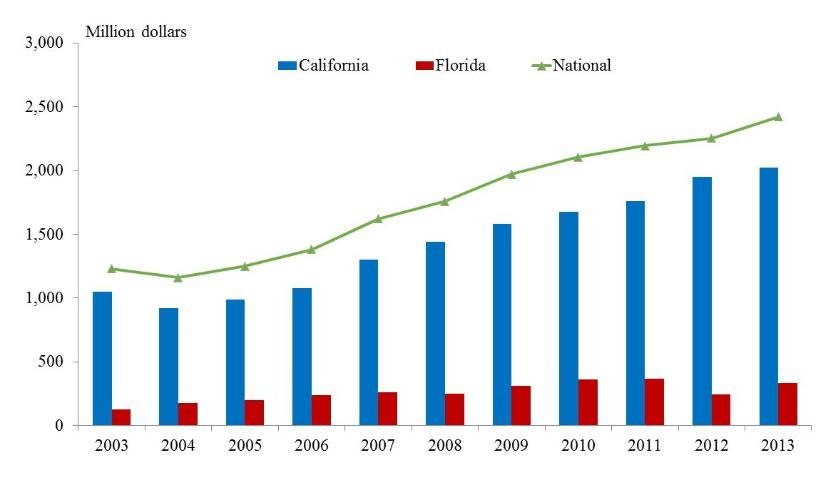
Figure 8 presents the strawberry harvested acreage of California and Florida between 2003 and 2013 (USDA/NAS 2014).The acreage in California far exceeds that in Florida.
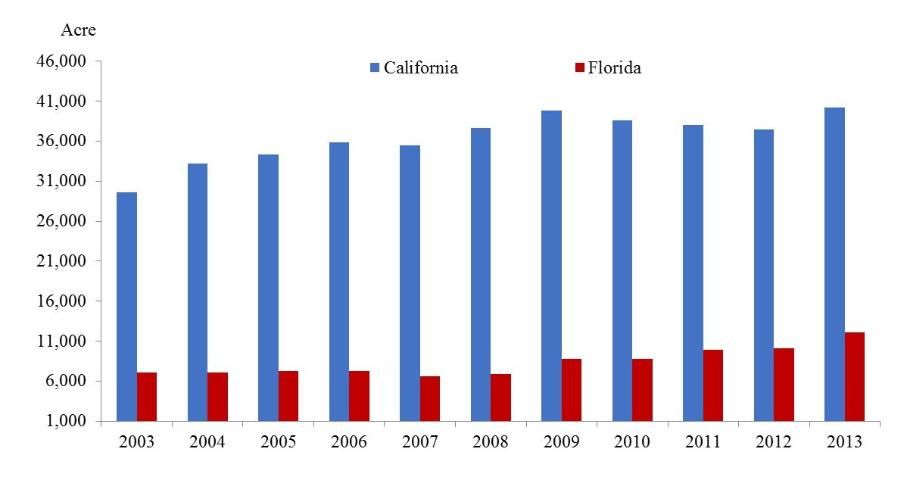
Exports
The United States is the second largest exporter of strawberries after Spain. In 2013, US fresh strawberry exports totaled 339 million pounds, with a value of US$467.8 million—the highest on record (Figure 9). Canada is the major export destination of US fresh strawberries, accounting for about 90% of the total US strawberry exports. Because imports from Mexico have quickly increased, net trade balance has dropped dramatically, peaking at 126 million pounds in 2008 (Figure 9). The US Census Bureau data (USCB 2014) show that US net exports in 2011 were 36 million pounds, down 56% from the previous year. In 2012, the United States became a net importer of fresh strawberries for the first time.
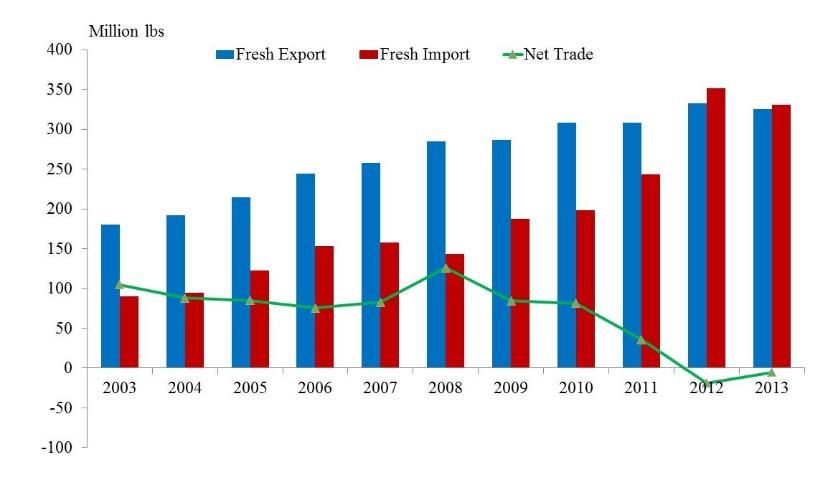
Imports
Not only is the United States the leading strawberry-producing country, it is also the fourth largest importer of fresh strawberries, reaching a record 351 million pounds in 2012 (Figure 10). Mexico is by far the largest strawberry supplier to the United States, accounting for about 99% of the total US imports (Figure 10). Mexico's production window overlaps with Florida's, with most of the strawberries from both countries being produced in the wintertime. It is expected that competition from Mexico will continue to intensify in the coming years. Figure 11 presents the US import parttern by month between 2011 and 2013 (USCB 2014).
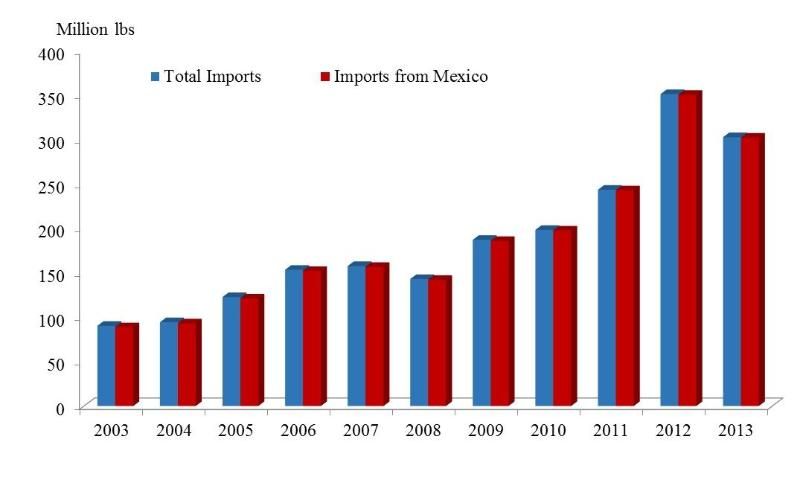
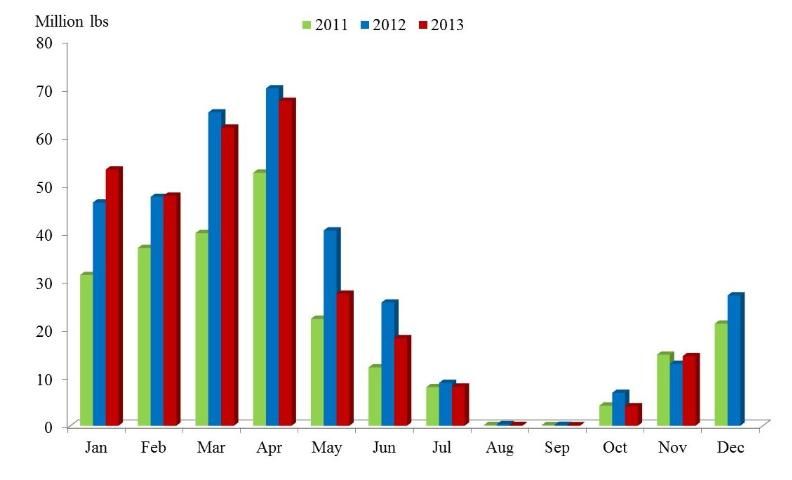
Conclusions
The US strawberry industry is a US$2.4 billion business, with the US strawberry industry having consistent growth since 2000. Most of this growth has occurred in California. Florida growers have experienced serious challenges and large losses in the last few years due to rapidly increasing strawberry imports from Mexico. As Mexico's production capacity and market supply continue to increase, the market price for strawberries will likely become more volatile in the coming years.
References
FAO. 2014. FAOSTAT database. Food and Agriculture Organization of the United Nations. https://www.fao.org/faostat/en/#home.
Fresh Fruit Portal, 2013. Mexico invests in doubling strawberry plantations. https://www.freshfruitportal.com/news/2013/08/21/mexico-invests-in-doubling-strawberry-plantations/?country=united%20states.
SAGARPA. 2014. Information Service for Food and Fishing. Secretariat of Agriculture, Livestock, Rural Development, Fisheries and Food (SAGARPA), Mexico. http://www.siap.gob.mx/cierre-de-la-produccion-agricola-por-estado/
USDA/NASS. 2014. Quick Stats 2.0. United States Department of Agriculture (USDA), National Agricultural Statistics Service (NASS), Washington, DC.
USCB. 2014. World trade atlas. United States Census Bureau (USCB), Washington, DC.